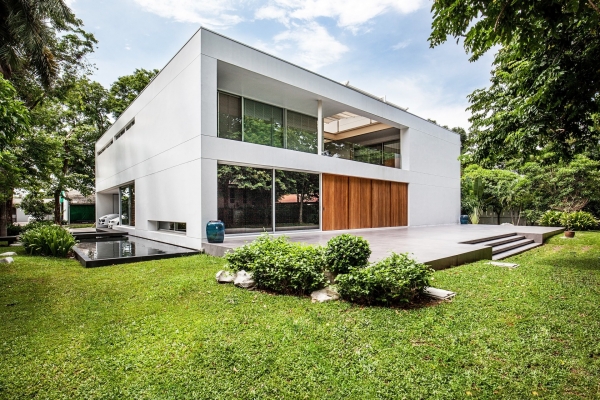This house is a product of an unlikely coupling - a reductive modernist articulation together with an intensive Feng Shui inspired planning. The work was a rigorous collaboration between the owner, Hypothesis team, and the client's Feng Shui master.
The plan of the house originated from the classical Feng Shui Bagua - the octagonal diagram that is used to analyze the energy, Chi, of any given space. We unfolded the Bagua, transforming the octagon into a nine square grid. The eight squares along the periphery of the grid represents the orientation of the eight elements in the Bagua, surrounding the central square where the energy, Chi, originates. Dualistically, the nine square plan also coincides with John Hejduk’s famous nine square grid exercise which he introduced to teach fundamental, architectural form making - a design methodology that prevailed the Western architectural education since the 1960s. The house then becomes a culmination of a traditional Chinese philosophy and an architectural design theory of the 20th century.
The house has a square plan. At the center, there is a courtyard with a rock garden. The central court is open to the sky - receiving Chi energy from the sky, and sunlight that reflect onto the lucky stones in the garden and spread into all the rooms surrounding the courtyard. Referring to the yin-yang principle, the house is yin (the static force) while the inhabitants areyang (the dynamic force). Once the inhabitants occupy the house, the forces are complemented and balanced - once life enters space, the architecture is balanced and complete.
Source:Dezeen


